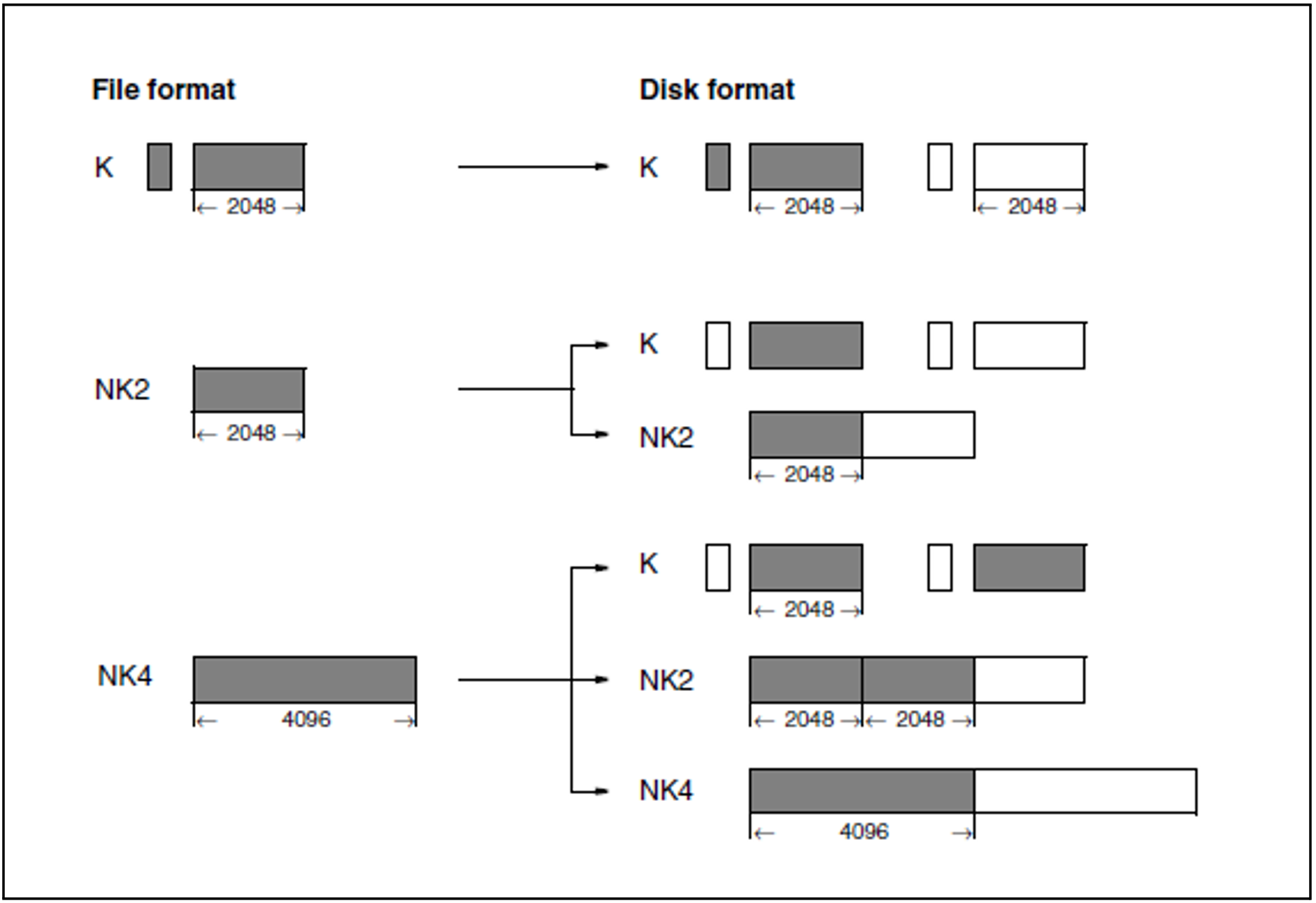Version: | PAMCONV V21.0A |
The PAMCONV utility routine is used for converting files from K format to NK format or vice versa.
Files encrypted with a crypto password are also supported (see "Functionality of PAMCONV").
In K format, the DMS management information is stored in a PAM key which is prefixed to the data block. This file format is referred to as key format, or K format for short.
In NK format, which does not use the PAM key, the DMS management information is either integrated in the data blocks or it is left out. This file format is known as nonkey format, or NK format for short.
The term NK file serves as a generic term for NK2 and NK4 files.
These file formats (K, NK2 and NK4) were created so as to be enable the data management system to make the best possible use of the existing disk formats.
The minimum transfer unit between the disk and main memory as well as the size of the smallest file (minimum allocation unit=min. AU) are depending on the file format.
Files on NK4 disks must always be in NK4 format. PAMCONV offers the possibility of converting K or NK2 files to NK4 format.
Disk formats
A disk format is defined by the criteria “with/without PAM key”, “minimum allocation unit (min. AU)” and “minimum transfer unit (min. TU)”.
The disk format within any one pubset is homogeneous (except SM pubsets).
For private disks the only formats supported are the K and NK2 disks with a minimum allocation unit of 6 Kbytes.
The following disk formats are supported:
Disk | PAM key | min. AU | min. TU | ||||
|---|---|---|---|---|---|---|---|
with | without | 6 KB | 8 KB | 64 KB | 2 KB | 4 KB | |
K disk | x | x | x | ||||
NK2 disk | x | x | x | ||||
NK2 disk | x | x | x | ||||
NK2 disk | x | x | x | ||||
NK4 disk | x | x | x | ||||
NK4 disk | x | x | x | ||||
The primary purpose of PAMCONV is to convert K files into NK files so that the latter can be stored in NK pubsets.
Conversion options with PAMCONV
The conversion options provided by PAMCONV for the individual file structures are listed in the table below.
Conversion options with PAMCONV
File structure | File format1 <--> file format2 | |||
|---|---|---|---|---|
ISAM |
| |||
SAM |
| |||
PAM |
| |||
Load module |
|


